You Can Comté On Me
Reviews of Holy Cow and The Ballad of Wallis Island, one film about making cheese and the other full of cheesy puns. Wine and Comté pairing enclosed!
This weekend sees a pileup of arthouse titles receiving their theatrical bows, and they may be flying a bit too under the radar when contending against the likes of Death of a Unicorn and the Princess Mononoke IMAX re-release. Holy Cow, a French film about making cheese, has a big pun in its title, and there is plenty of cheesy wordplay to be had in The Ballad of Wallis Island, a crowd-pleasing British comedy with music. Also, three films I saw at NYFF are also being released and I’ve resurfaced my previously published reviews of Việt and Nam, Grand Tour, and The Friend.
Holy Cow
Playing at Film Forum in NY, with a limited expansion to follow.
In eastern France lies the Jura, a region of valleys surrounded by tree-covered hills and mountains. Each morning, fog clings to the pastures where cows leisurely graze, and truck drivers begin their rounds, collecting milk from farm to farm — milk that will become the renowned Comté cheese. This is the area where Louise Courvoisier grew up, and her debut feature is a Western-influenced yarn that pays tribute to its people, traditions, and cheese. The story centers on Totone (Clément Faveau), a miscreant youth who, after a sudden tragedy, must care for his younger sister and find a way to make money. Spotting a flyer for a cheese competition with a 30,000€ grand prize, he tries his hand at making Comté, but it’s no easy journey. Both he and the fromage must come of age.
To help out with this renegade cheese operation, Totone enlists two of his mates. They may not have much in the way of training, but they’ve got ingenuity — fabricating tools and equipment from junkyard scrap — and a flimsy moral code — breaking into local farms at night to steal their milk. Totone even strikes up a sexual relationship with Marie-Lise (Maïwène Barthelemy), one of the farmers whose milk he siphons after making hay in the haystacks; lucky fellow gets both the dairy and the derrière. We learn about the cheesemaking process along with the boys, as they pour that ill-gotten dairy into vast bronze cauldrons, in which the milk will be warmed, curdled, and very carefully strained. Viewers with dairy allergies or vegan diets may feel left out of the fun. (Quel fromage!)
Holy Cow could have been an inspirational tale of pastoral perseverance, it avoids sentimentality; this is not Babe1. Courvoisier directs with the eye of someone who knows this land intimately, portraying both the joys and hardships of living in the beautiful Jura. It has an appealing simplicity, but there’s not much to do in the evenings besides drink and pick fights with neighboring villagers. The film’s immersive, neorealist grounding is enhanced by a cast of non-professional actors, many of whom are farmers themselves. So don’t expect our hero to shock the cheese world and triumph with his homemade Comté. By the end of this journey, Totone learns that he and his cheese need time to mature.
The film’s French title, Vingt Dieux, is a common expression in the Jura. It literally means “Twenty Gods” and is often translated to “Holy Cow!” and it’s a happy coincidence that the English title takes on a double meaning. (Hence all the cheesy punditry in this review.) There’s another French idiom, the equivalent of “having your cake and eating it too,” that goes: “il a eu le beurre, l’argent du beurre, et le cul de la crémière” — he had the butter, the money from selling the butter, and the ass of the dairymaid2. That’s basically the plot of Holy Cow, and one wonders if Courvoisier reverse-engineered her script from that phrase, in a feature-length feat of wordplay.
Tasting Notes
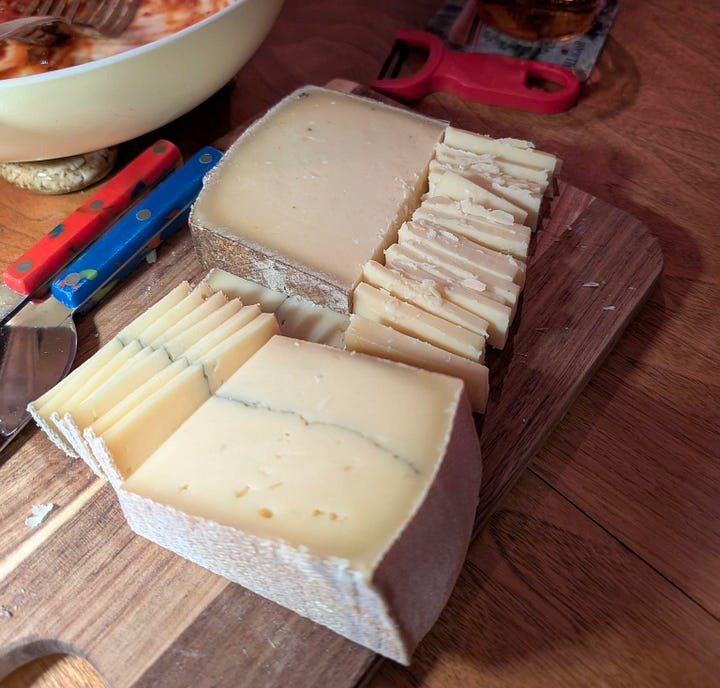
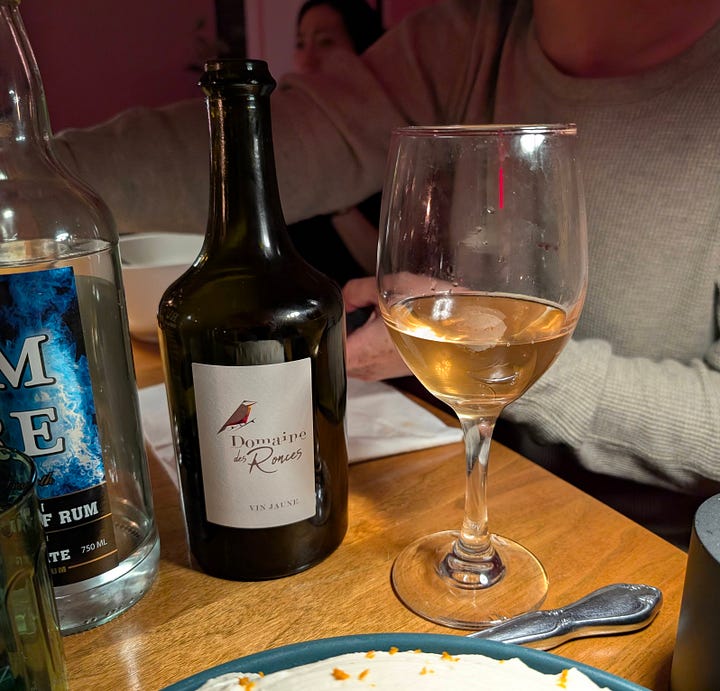
I knew that after seeing this film that I’d want to enjoy a big hunk of comté, and friends coming over for dinner was the perfect occassion3. A very short walk from the Film Forum (where the film is playing in New York) is lactose emporium Murray’s Cheese. They offer two different comtés: one aged for 18 months, the other for 3 years, a relatively long time for this cheese. My initial idea was to get both cheeses and do a comparison, but the guy behind the counter gently but firmly suggested to not even waste my time with the younger cheese, which was pre-cut, wrapped in plastic, and displayed at room temperature, whereas the elder comté was cut to order. One sample of that 3 year comté and I knew he was right. It was richer and fuller than any comté I’d had in my life, with ample crystals throughout, the sign of a well-aged cheese.
To round out the cheese tasting, I also got a wedge of morbier, another cow’s milk cheese from the Jura. Softer and nuttier than comté, with a distinctive line of ash through the center, it’s got a bit of a spring when poked and is pleasantly funky, and has been one of my favorites as of late.
And of course, we had to have wine with that cheese. The classic pairing for comté is vin jaune, a very unique wine also from the Jura. Made with the Savagnin grape, it’s matured in small oak barrels, where a layer of yeast develops on top as it ages4. I ventured crosstown, dodging the swarm of NYU kids getting out of class, to the ever-reliable Astor Wine & Spirits. Vin jaune can be fairly expensive, but the Domaine des Ronces 2016 was described to me as a very good entry-level bottle, and as of press time it’s still available at a discount for $59. It smells like a funky port, but tastes like a dry sherry. Once opened, a bottle can apparently last a couple weeks in the fridge, but I never got to test that, as it did not survive the night.
(Note: toasted hazelnuts would be a perfect addition here as well, but I didn’t want to kill Byron, who has a nut allergy.)
All of which is to say: if you live in New York, you can re-create this Holy Cow/Vingt Dieux experience! And if you live elsewhere, this shouldn’t be too hard to put together. I was not paid to write this by the distributor or Murray’s, but maybe I should have been.
The Ballad of Wallis Island
Opens in NY & LA this weekend, slowly expanded to more markets until wide release on April 18.
Just off the coast of Pembrokeshire, Wales, is Wallis Island, which can only be reached by a rowboat that comes once a day, sometimes twice. Washing up onto the shore is forty-something folk singer Herb McGwyer (Tom Basden), who was invited to this isolated locale to play a private concert for a reclusive millionaire. He’s paid a cool 50 million quid for his services — in cash. But the mysterious benefactor is neither an oil baron nor a mafioso. As it turns out, Charlie (Tim Key) is just a socially awkward yet earnest superfan who happened to win the lottery… twice5. But he’s really a fan of McGwyer Mortimer, the musical and romantic partnership through which Herb rose to fame with his then-wife Nell Mortimer. It’s been nine years since both the band and the marriage dissolved, and Charlie has arranged a surprise reunion: also on Wallis Island is the estranged Nell (Carey Mulligan), accompanied by her new husband (Akemnji Ndifornyen; practically William Jackson Harper’s understudy).
Herb’s fingerpicking is a bit rusty with those old songs, but he and Nell quickly rediscover their musical chemistry. (Those McGwyer Mortimer songs, all originals composed by Basden, are very good, if not earth-shakingly amazing. There’s an entire album of songs that we mostly hear in excerpt.) It’s obvious that Herb is still in love, whether it’s with his ex-wife, the past, or both. On Nell’s part, she relishes the chance to relive the good old times, having retired from music and now making chutney for Portland farmers markets. That new husband of hers, an avid birder, conveniently spends a few days on the other side of the island so that he can see a bunch of puffins. Might romance be rekindled? We may anticipate cliché, but we are quickly diverted from such expectations. Basden and Key, veteran comedians expanding on their BAFTA-nominated short film, have written a remarkably grounded story about letting go of the past that will also charm your knickers off. Basden and Mulligan have a delightful push-pull dynamic, reminiscent of reconnected friends picking up where they had left off. Key, in a remarkable performance, will deliver a pun with dry delight — Charlie has a fondness for wordplay — then in the next beat, stoically hint that the chasms of grief he has experienced.
The lovely folk-rock music, insane chemistry, and acrimonious breakup of McGwyer Mortimer may remind you of The Civil Wars. Just a few hours before seeing The Ballad of Wallis Island, I read an old Reddit thread that exhaustively details the lore behind that duo: a rise to fame and a potential surreptitious affair gone sour (both band members were married to other people), and I wondered if Wallis Island were accidentally elaborate fanfiction.
Also In Theaters
Three movies I saw at NYFF last year are beginning their theatrical campaigns this weekend! Two I’d recommend, the third I would not despite the prominence of a very good Great Dane. These are shortened versions of my NYFF reviews, and you can click on the film’s title if you want to read more.
Việt and Nam
Playing at IFC Center in NY, with limited expansion to follow.
Situating his country’s post-war legacy within contemporary concerns, Trương Minh Quý crafts a film that can be beguiling, but at its best, spellbinding. The titular characters — Việt and Nam — are coal miners who happen to be lovers. One of two (it’s never clear who is Việt and who is Nam) is planning to sneak across the border, to join the wave of migrants looking for opportunities elsewhere. Meanwhile, one of their mothers is on a quest much closer to home: her husband was a Viet Cong soldier who died in the war, and she’s still searching for his body, decades later. For those able to get in tune with this film’s leisurely paced dream logic and intentionally distant emotionality, this can be a rewarding movie to experience.
The Friend
In limited release, with nationwide expansion April 4.
Naomi Watts stars as Iris, the best friend (and former lover) of Bill Murray’s Walter, a successful author and womanizer who commits suicide early in the film. His beloved Great Dane, Apollo is bequeathed/forced on Iris, and in her cutely cramped West Village apartment, woman and dog help each other grieve their deceased beloved. The story is promising, but the more complex themes of Sigrid Nunez’s novel are collapsed into rote sentimentality. It’s one of those “writers writing about writers” movies that makes all the characters come off as annoying.
Grand Tour
In limited release and streaming on MUBI April 18.
The story follows Edward, an English diplomat stationed in Burma, as he journeys through colonial Asia in an attempt to dodge an impending marriage. As he ventures through the jungles of Thailand and the mountains of China, his fiancée, Molly, doggedly pursues him. She’s always a city or two behind, and they undertake parallel grand tours of the Far East. It’s an adventure through a colonial paradise that never really existed. Miguel Gomes, the film’s director, doesn’t try to hide that he shot the film on soundstages; why bother denying that this was a fantasy vision of these exotic locales? Black and white fictional scenes are occasionally interrupted by contemporary color footage, showing what these cities look like today. An imagined past and an authentic present are brought together in the way that only cinema can accomplish.
Wanting to put together a “grand tour” of Asian food that mirrored the itinerary of the movie, I asked my friends, who hail from one of the seven countries in question, a simple question: “what is your favorite ____ restaurant in New York?” Had a lot of fun putting this one together!
NYFF Dispatch 5: A Grand Tour of Asia, in Film and Food
Tonight marks the first New York Film Festival screening of Grand Tour, which takes us on a journey through the colonial Far East. It also marks the first time I’m really able to integrate food-related material into my festival coverage, with a list of New York restaurants that will allow you to chart your own grand tour of Asian cuisine.
For the record, I love Babe.
One of the highest-rated Letterboxd reviews riffs on that expression, thank you to this French Letterboxd user for making the connection.
The starter for this dinner at home was tinned eels smuggled from Spain, main course was bucatini all’amatriciana — with guanciale!!! — and then came the cheeses, served with sourdough crackers.
Typically, wine barrels are topped off to make up for the angel’s share (aka evaporation), but that is not the case for vin jaune.
The odds of winning the UK’s National Lottery twice is 1 in 2.03 quadrillion (2.03 × 10¹⁵). It’s so hilariously unlikely that you just roll with it and move on.





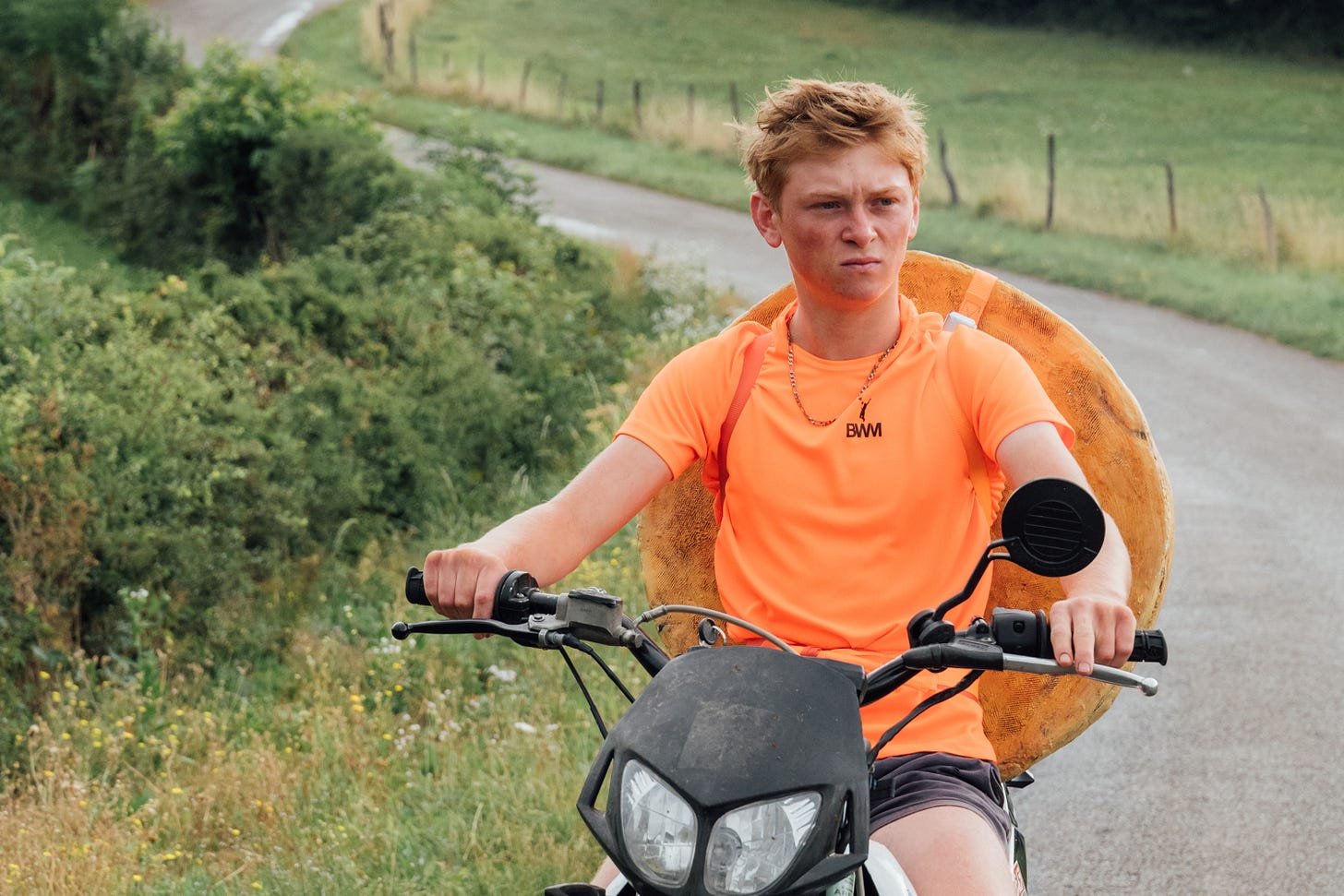

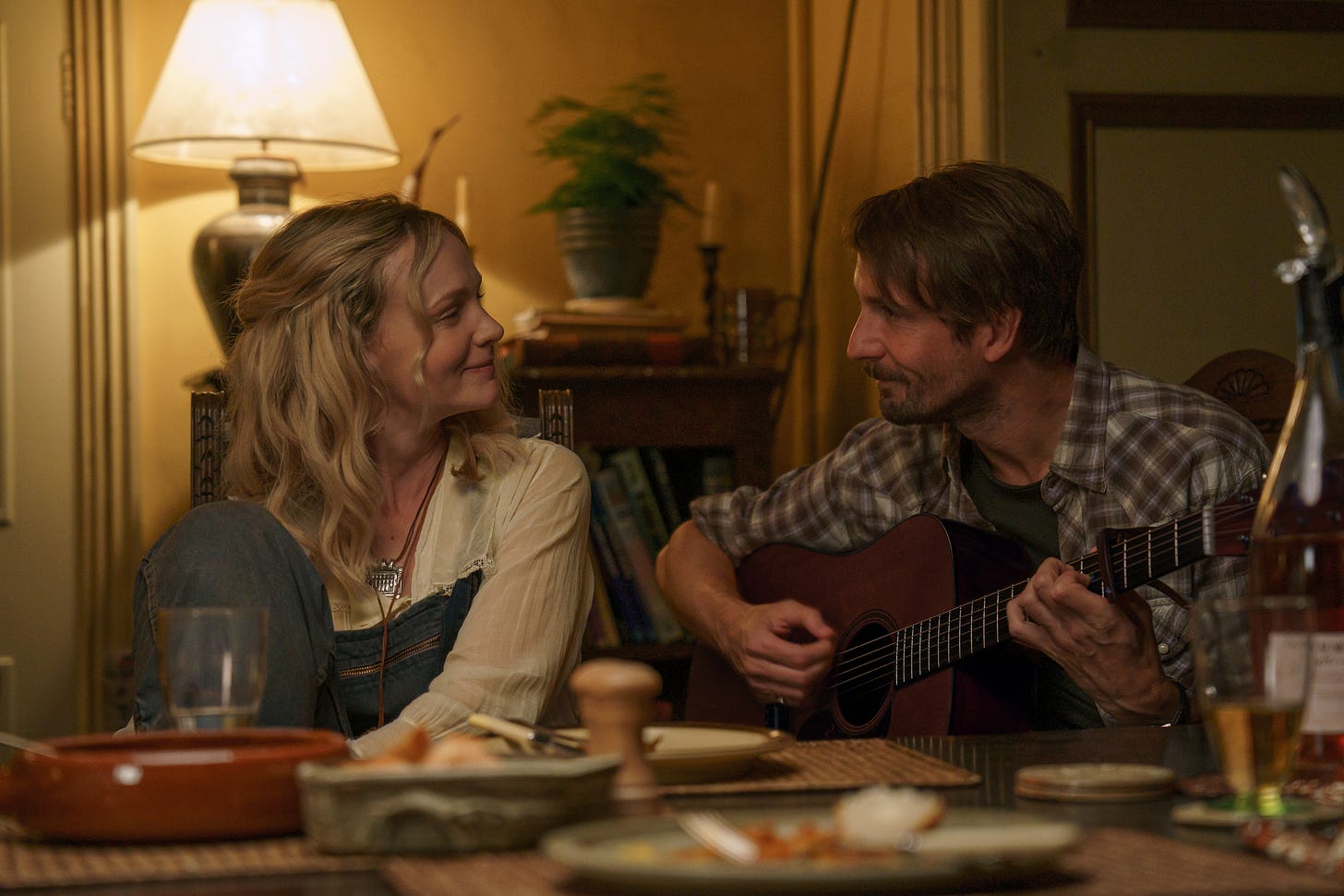
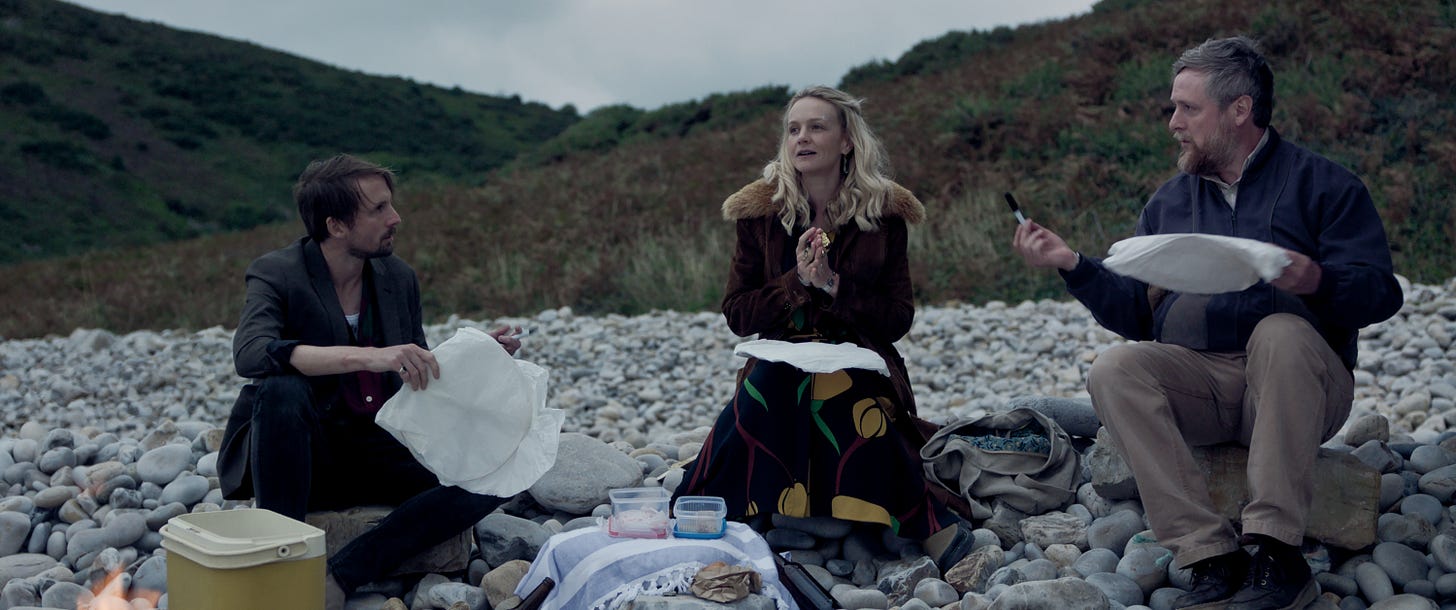


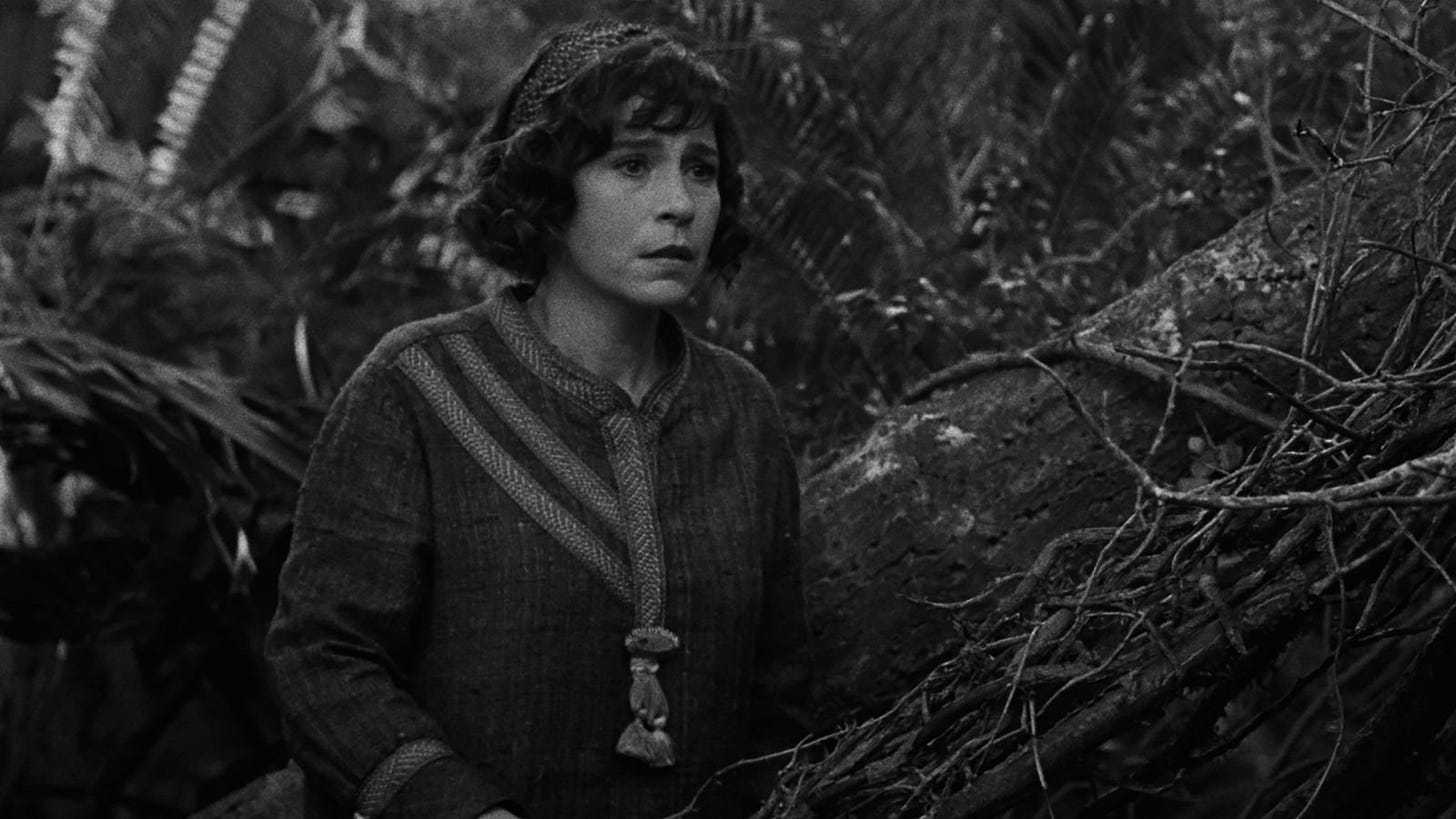
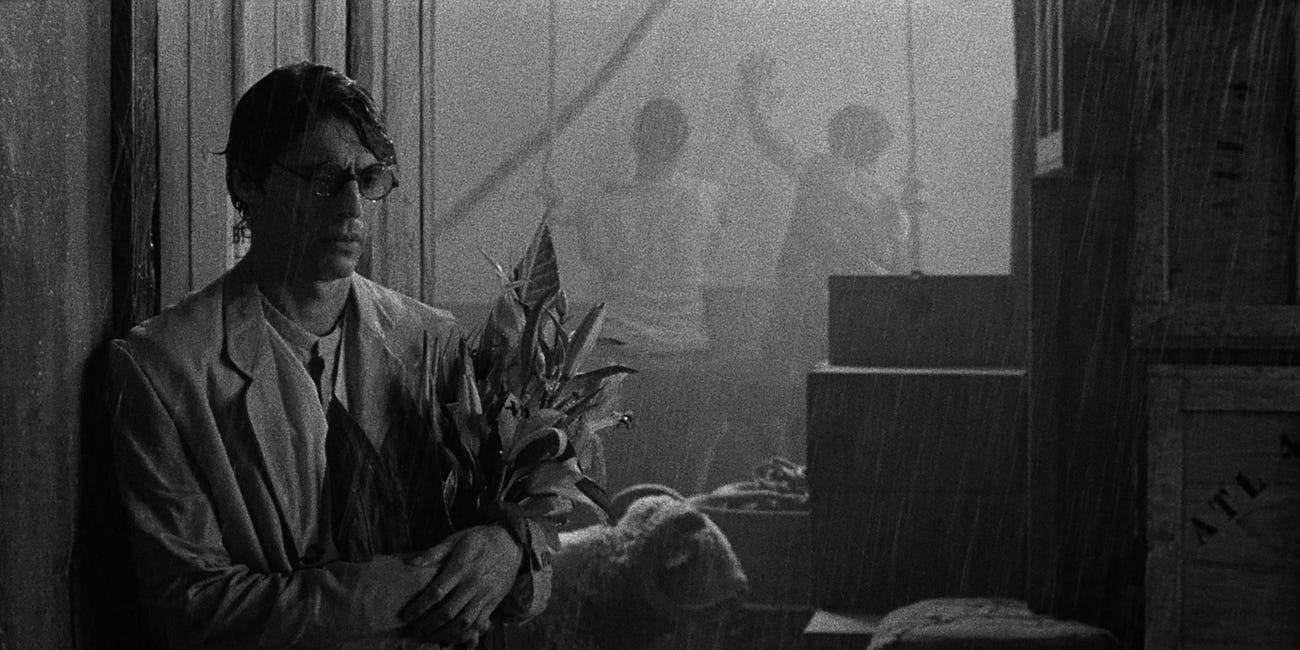
Your review of Holy Cow made me want to immediately grab a sleeve of lactaid and enjoy a fromage-fueled watch party.